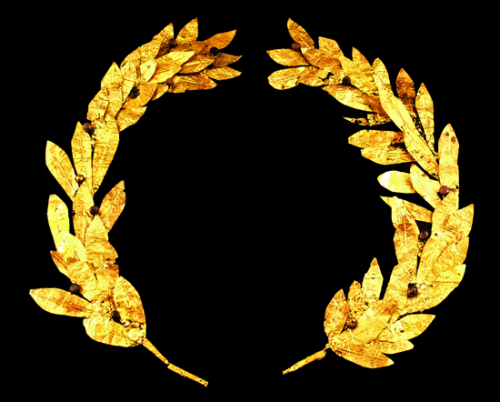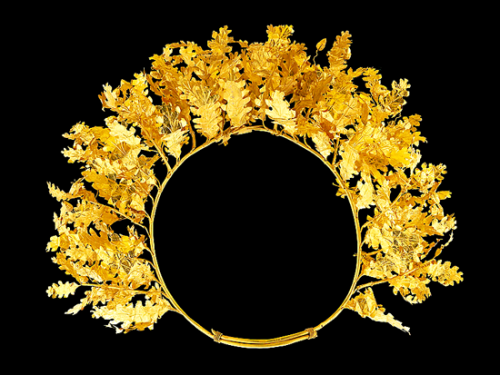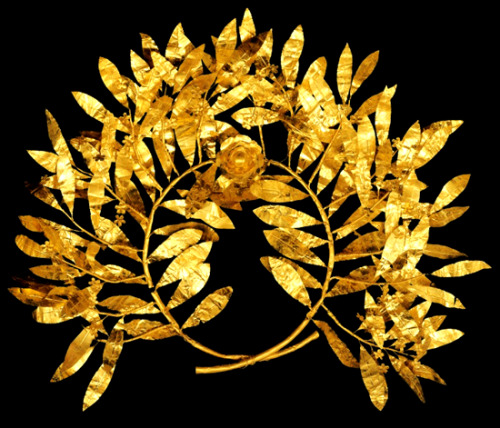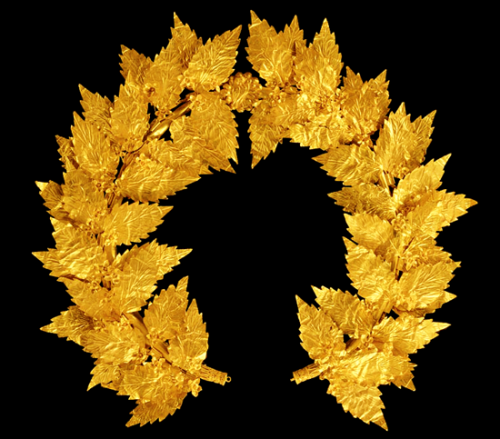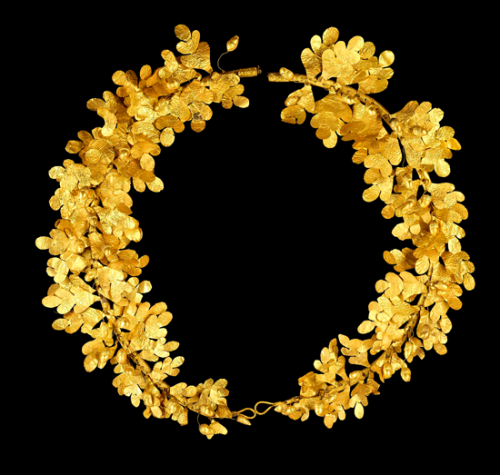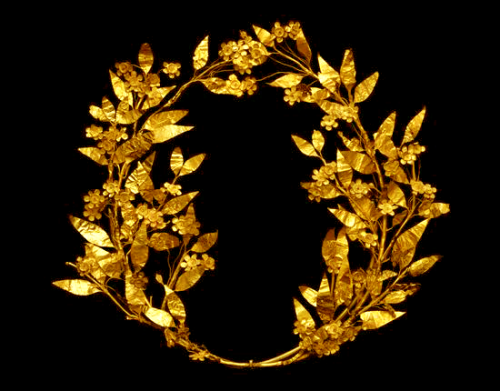fuckyeaharchaeology:Hellenistic Gold WreathsIn Ancient Greece, wreath crowns were given as prizes to
fuckyeaharchaeology:Hellenistic Gold WreathsIn Ancient Greece, wreath crowns were given as prizes to the victors of athletic and artistic competitions. The wreaths were often made from the branches of Laurel, Myrtle, Oak, and Olive trees. These trees in Ancient Greece were symbolic of various number of concepts such as wisdom, triumph, fertility, peace, and virtue. Gold wreaths were meant to imitate their natural counterparts. However, due to their fragile nature, they were only worn on very special occasions. Many gold wreaths were dedicated as temple offerings and served as funerary goods for royalty and the wealthy elite. The vast majority of gold wreaths date to the Hellenistic Period, after the conquests of Alexander the Great, although they have been known to have existed since the Classical era. They exemplify the exceptional skill of goldsmiths during the Hellenistic period.Images:1) Gold Laurel Wreath from Cyprus, 4th-3rd Century BCE. Reiss-Engelhorn-Museen, Germany.2) Gold Wreath of Oak Leaves from the Royal Tombs of Aigai. 4th Century BCE. The Louvre. 3) Gold Myrtle Wreath. 4th-3rd Century BCE. The Benaki Museum, Athens.4) Gold Wreath of Oak Leaves and Flowers from Attica. 2nd-1st Century BCE. Canadian Museum of History, Quebec. 5) Gold Wreath of Oak Leaves and Acorns. 4th Century BCE. Museum of Fine Arts, Boston.6) Gold Myrtle Wreath from Corinth. 4th-3rd Century BCE. Museum of Fine Arts, Houston. -- source link
Tumblr Blog : fuckyeaharchaeology.tumblr.com
#classics#tagamemnon#ancient rome#ancient greece#archaeology
